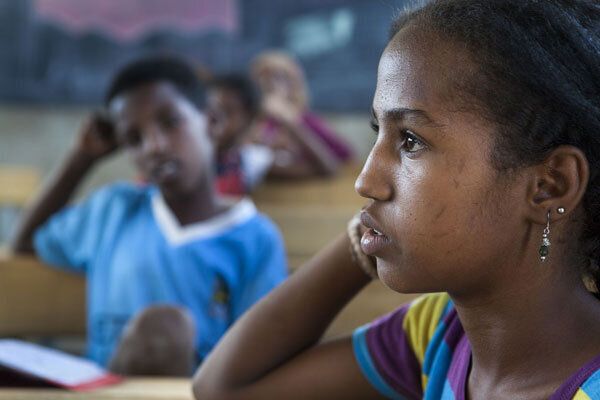
If it is true that money talks, then what it says about the Mali conflict would mean many have been simply priced out of the conversation.
The fallout from the conflict has displaced hundreds of thousands of people - about half of whom are children. This week, those children have been telling us at Plan International about their experiences living in exile over the last year - ripped from the comfort of their homes to the cold reality of tents.
The humanitarian community has long been doing its best with slender funds to help them but we have not received anything like the same level of support that the African and international communities raised in a single day primarily to fund troops, munitions and logistics for the African-led International Support Mission to Mali (AFISMA).
Back in January, on the day that the donor conference was held in Addis Ababa to raise these funds for military purposes, humanitarian agencies had barely received 1% of the $370 million they had been appealing for the Sahel region since last year. Then, to our great concern, we learn that in just a few hours donors in Ethiopia willingly opened their treasuries to underwrite the mission with $455 million of funds.
Fundamental imbalance
On that same day, Plan International's Head of Emergency Response Dr Unni Krishnan appealed for these countries not to forget the needs of children in their budgets to secure Mali.
There is a major imbalance which needs to be addressed by world governments. Funding for such military actions should really be match-funded for sheltering, protecting and reconstructing lives of those children whose lives, our experiences have shown, will be shattered by conflict.
Since the Addis meeting, aid donations have increased from 1% to 15% ($57.9 million / 75.7 million Euro) but that still pales in comparison to the Syrian Crisis where the total appeal is $1.56 billion (2.04 billion Euro) of which about 40% ($633 million / 827.6 million Euro) has been raised and another $1.26 billion (1.65 billion Euro) has been pledged.
Is this sending a message that if you are a child born in a certain corner of the world you will receive more aid than a child also suffering in conflict in another part? Doesn't this defy the UN Convention on the Rights of the Child which states all children are entitled to the same rights and privileges? Every country in the world - except the USA and Somalia - has ratified this convention.
Displaced culture
This is just the start of a long hard road for displaced Malian children. The harsh reality is that once people are displaced by conflict, it's a long term displacement. It can last from a few years to a few decades - long after the journalists and foreign troops have departed.
Children will lose their national identity. They will lose their cultural norms.
Many refugees in places like Niger and Burkina Faso, where Plan International is servicing refugee camps, are herders. But they can't bring their animals with them into the camps and they are forced into a different lifestyle. Their diets must change too. These are a people who are accustomed to cow or goat milk as part of their daily routine but in the camps we can only distribute water.
In schools that Plan funds in southern Mali we try to provide services which mirror the north Malian culture as much as we can.
Declining funds
In schools in Burkina Faso we try as much as possible to help children, such as Mohammed, who longs to become a musician to continue the rich musical culture that distinguished northern Mali before the war.
One of the things that displaced people often keep intact in these difficult times is their religion. But it's not the same as home and in time they become not only a displaced people but a displaced culture.
In 1970, the world's richest countries agreed to give 0.7% of their Gross National Income as official international development aid, annually, but the reality is that they have rarely met their targets despite the billions that have been provided.
To complicate matters, OECD has revealed that major donors' aid to developing countries fell by nearly 3% in 2011, breaking a long trend of annual increases. Disregarding years of exceptional debt relief, this was the first drop since 1997 and it has predicted that continuing tight budgets in OECD countries will put pressure on aid levels in coming years.
In the same 30 year period, we have seen that the number of disasters and emergencies has more than doubled.
There is a strong case for the humanitarian and donor communities to review the nature of aid to help citizens and their children to recover from the aftermath of conflict in a changing world of increasing disasters and conflicts. We just may have to shout a little louder.
